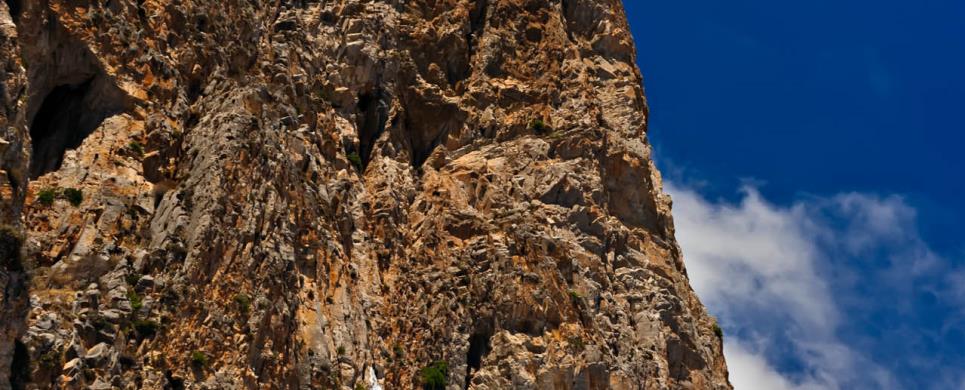Listed 5 sub titles with search on: Places of worship for wider area of: "AMORGOS Municipality AMORGOS" .
LAGKADA (Village) AMORGOS
Agia Triada - Hanging on a ledge under an overhang, the small Agia Triada (Holy Trinity) church, reminds of the position and appearance of Hozoviotissa. It was built during the years of piracy and it was used as an occasional hiding place for the Aegialis population. It is only 5 minutes walk from Lagada village, and overlooks the whole area of Tholaria, Lagada, and the valley of Aegialis with the port. There is a spring festival every year, 50 days after Greek easter.

Tel: +30 22850 71212, 71274

MONASTERY CHOZOVIOTISSA (Monastery) AMORGOS
Tel: +30 22850 71274
The Byzantine Monastery of Panagia Chozoviotissa is located on a steep cliff, 300 m. above sea level,
which overhangs the southeastern coast of the capital (Chora) of Amorgos.
The position, inaccessible and imposing, is visible only from the sea.
The name of the monastery is a corruption of the name Choziva or Koziva, a location in the Holy Land,
where the Orthodox monastic tradition flourished since the early Christian times. In the oral tradition of Amorgos survived
the narrative of the miraculous advent of the icon of Panagia on the island during the period of Iconoclasm. The monastery
heirlooms include two icons bearing the inscription ΧΩΖΗΒΙΤΙCΑΣ (CHOZIVITISSA). In fact, the co-study of Byzantine historical
sources, of the events of this turbulent era in the eastern Mediterranean and in Palestine, and of later ecclesiastical documents
(codices and patriarchal sigillia) suggests that the first building on site dates to the 9th century AD, when the icon first came on the island,
thus supporting the oral tradition.
Decisive evidence regarding the foundation history of the monastery provides the inscription preserved on a silver hexapterygon
(metal disk with a representation of the six-winged Serapheim) of 1652, according to which the monastery was rebuilt (or fundamentally renovated)
by the Byzantine emperor Alexios A’ Komninos (1081-1118), whose decree of 1088, giving stauropegic rights to the monastery, is also known to us
from literary ecclesiastical sources.
Hence a Middle- and Late Byzantine monument, the monastery comprises a building complex, fully incorporated to its surrounding environment.
The steep uneven land imposed a multi-level plan evolved in eight floors, so that the monument seems like a white expansion of the rock. At the centre of the
complex lies the small vaulted church, which is surrounded by the numerous monks cells, along with a series of auxiliary spaces (kitchen, bakery, storerooms,
wine press), cisterns and wells. Staircases, built or carved in the rock, lead from one level to another. In terms of layout, building technique and architectural
form the complex is a typical example of the popular island architecture of Greece, preserving additionally important elements of the past, such as the Byzantine
arches or the pointed arches of the Venetian period (1296-1537).
An exhibition of the monastery heirlooms was organized in 1978 and is open since then to the public. Among the most important exhibits of the
collection are:
- Codices in pergamene (10th- 15th centuries) or paper (13th-19th centuries), sigillia and printed Evangelia.
- Important specimens of ecclesiastical gold-embroidery decorated with precious stones. Also metal components of clerical vestments created by several workshops
of silver craft. In their majority the exhibits date to the 18th and 19th centuries.
- Valuable ecclesiastical objects and vessels, such as icons, crosses, chalices, candle stands, oil candles etc.
Receive our daily Newsletter with all the latest updates on the Greek Travel industry.
Subscribe now!